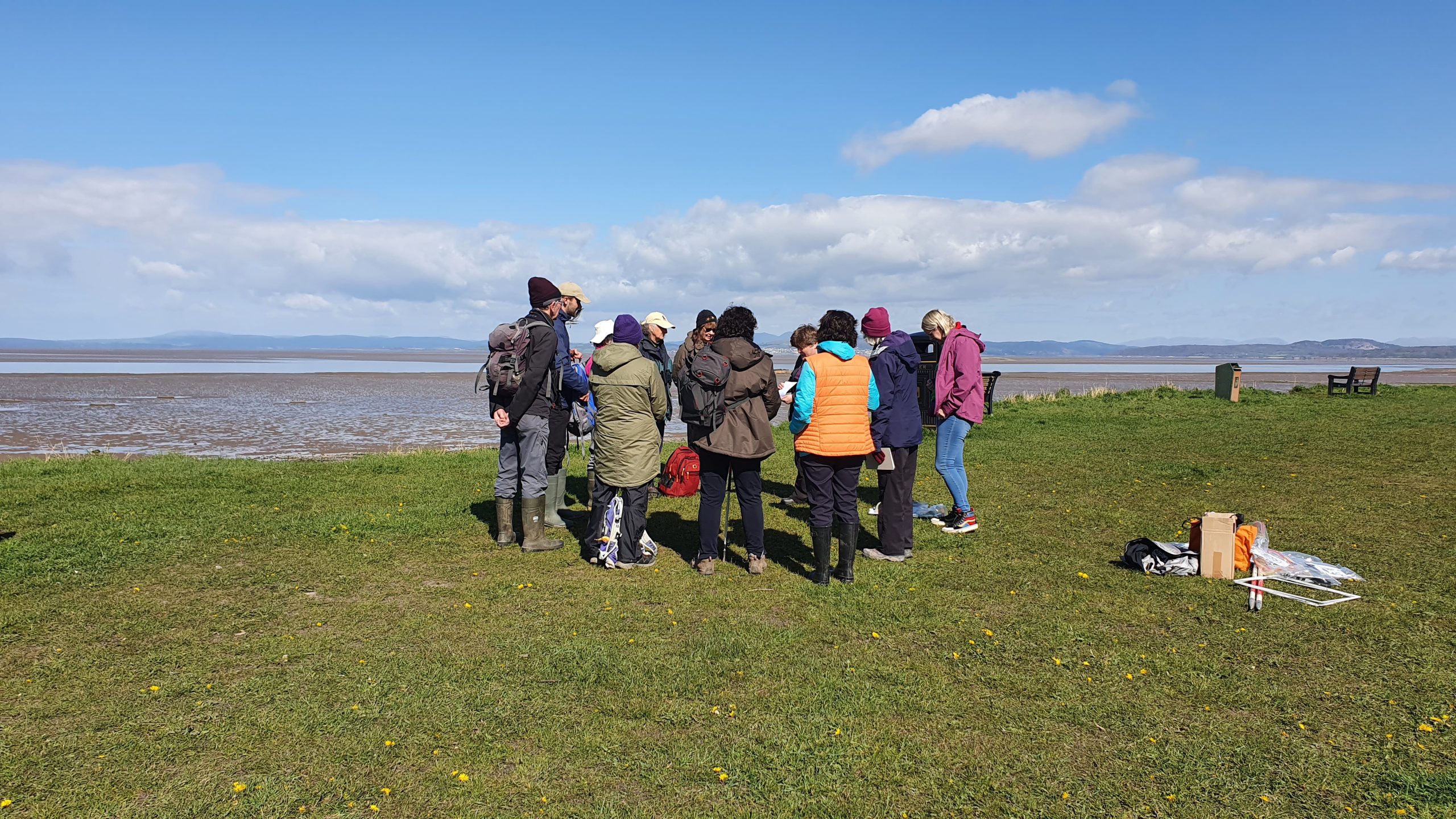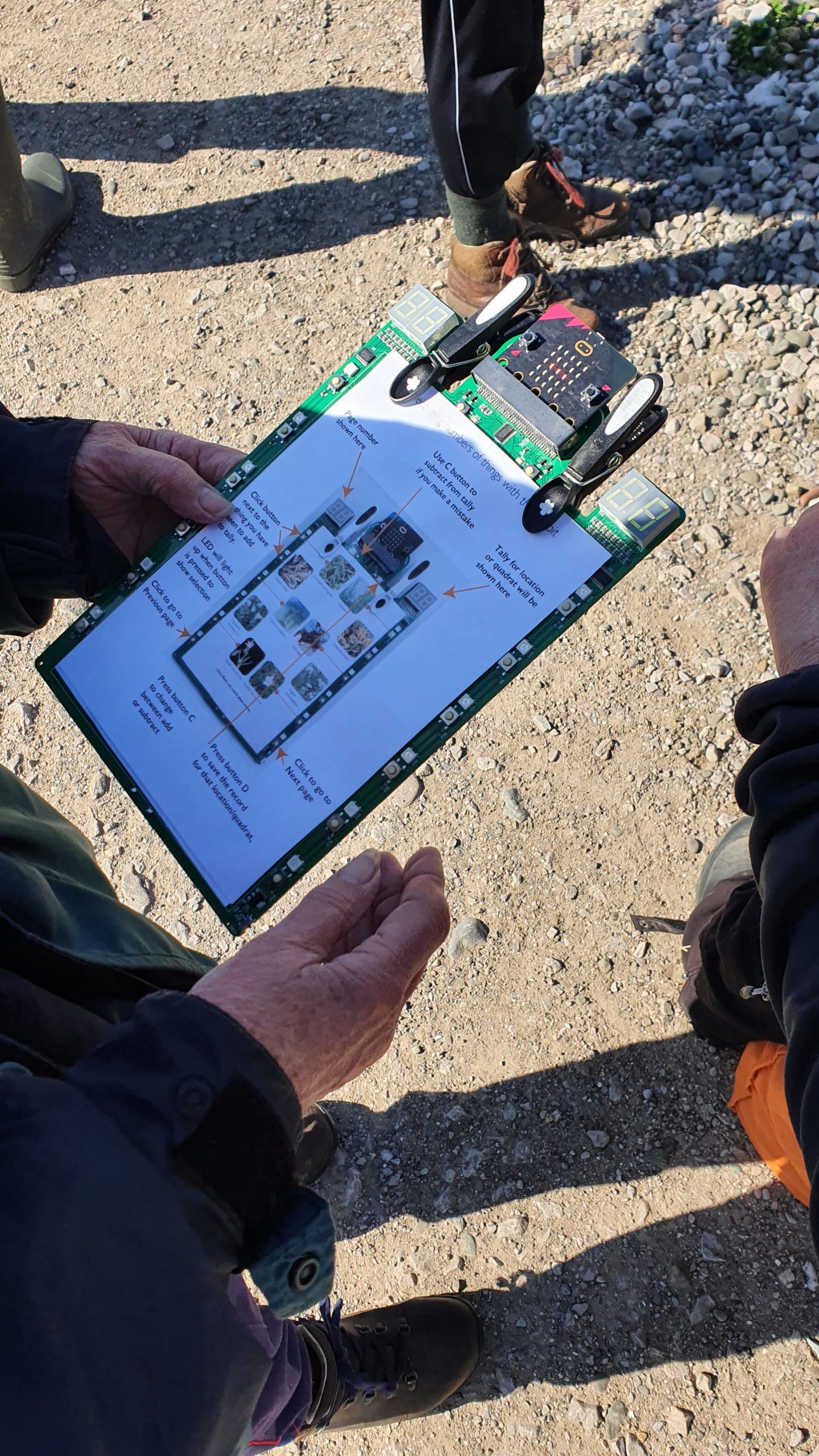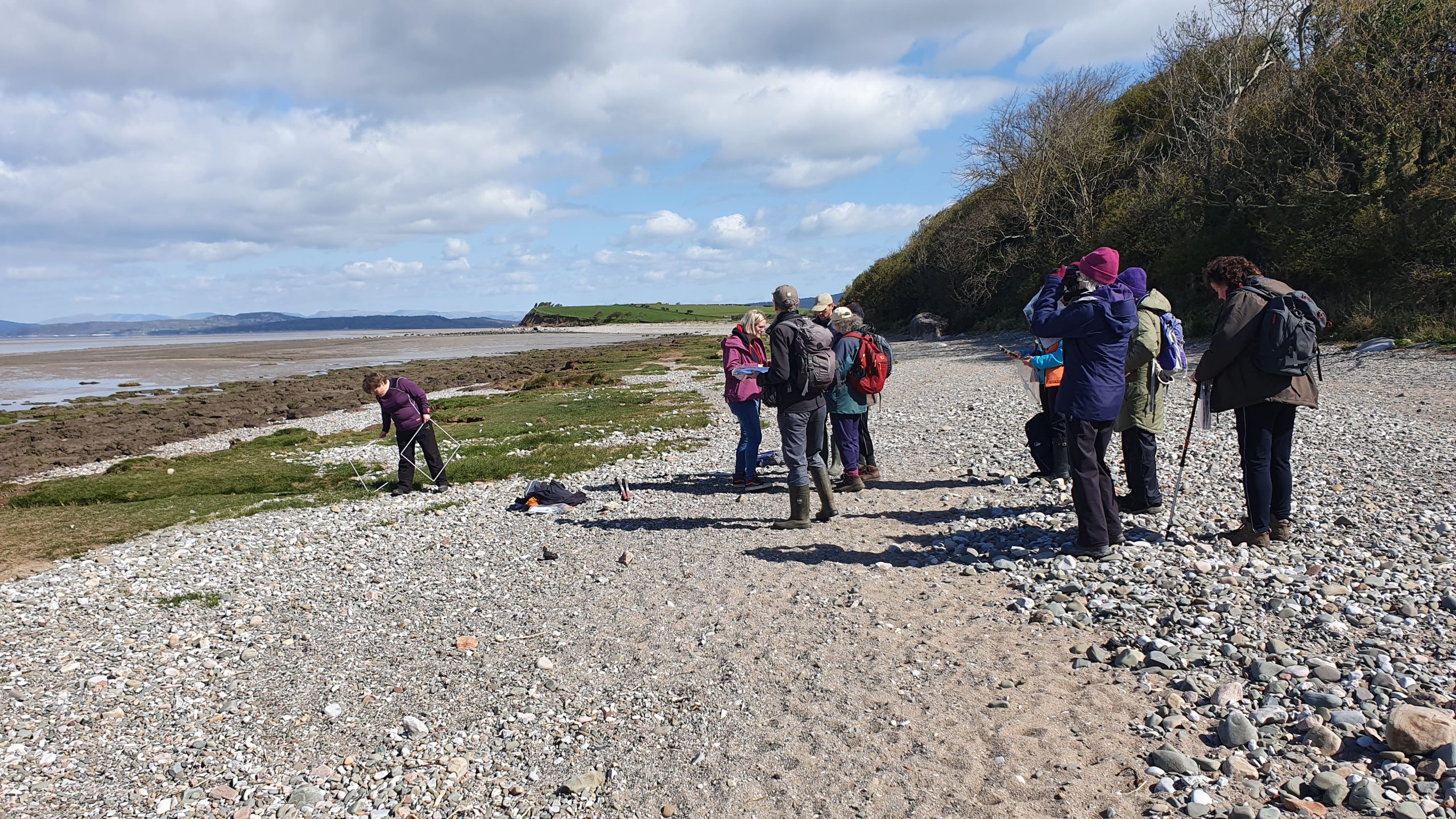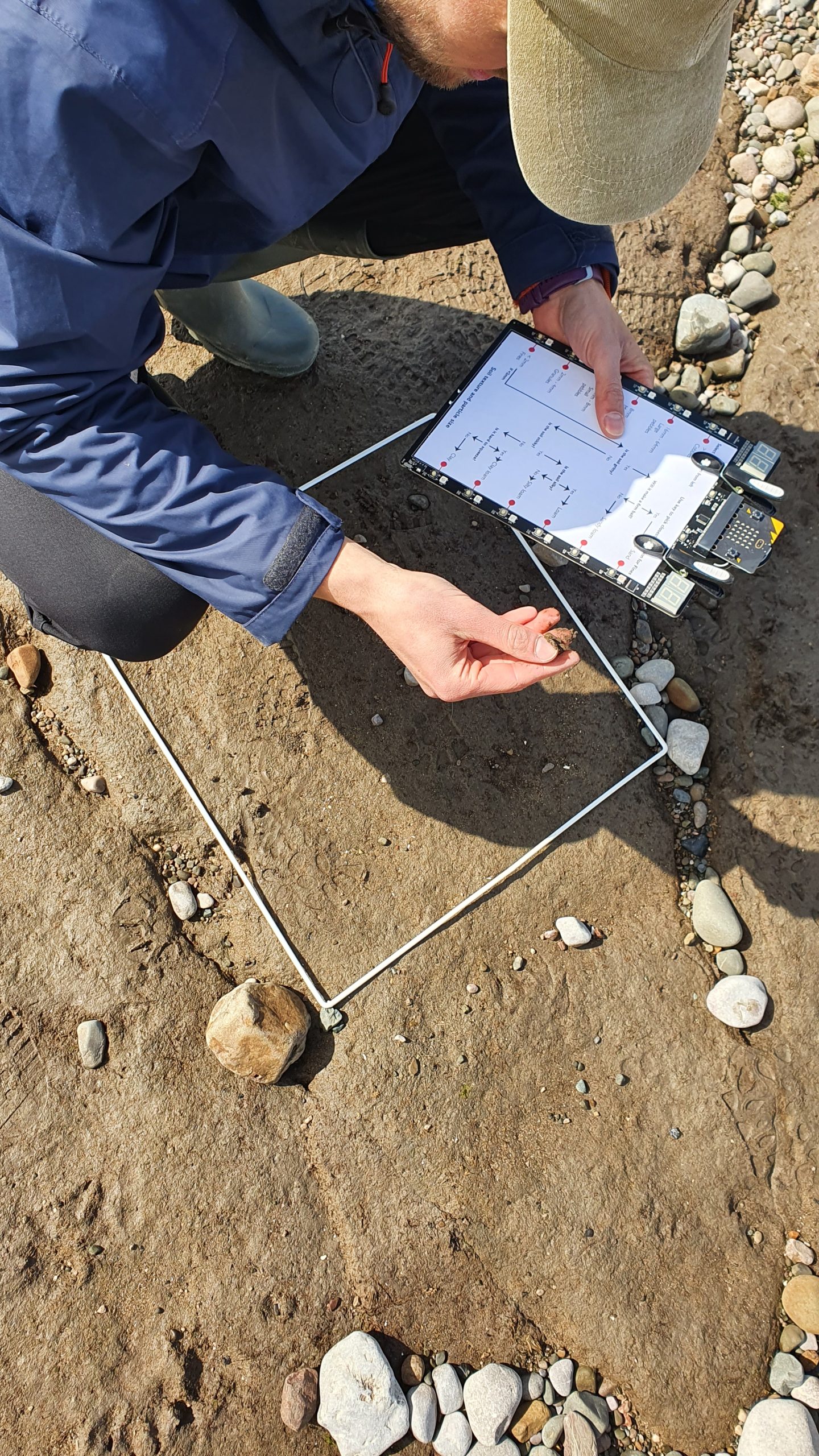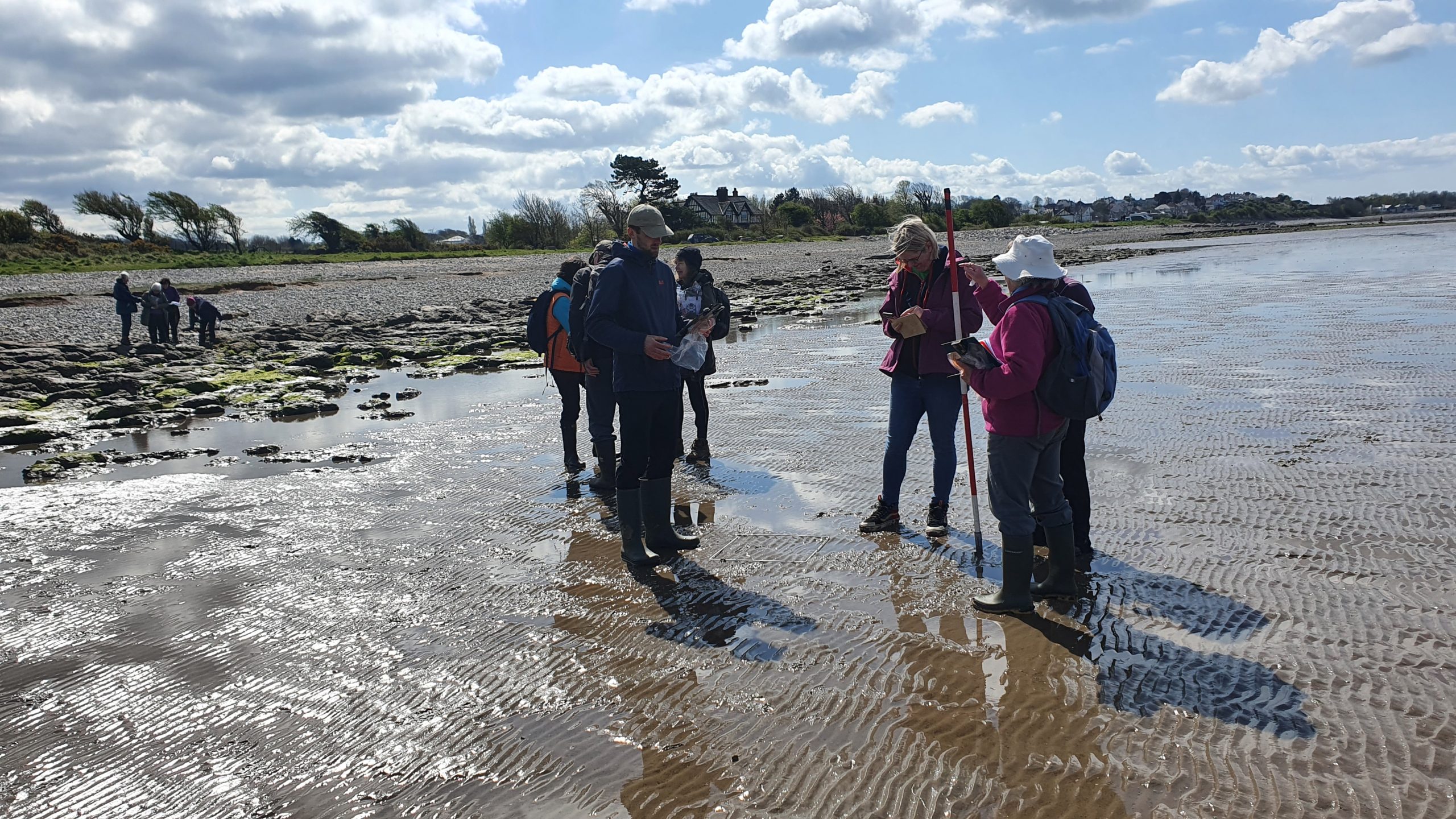We recently visited Hest Bank with Grange Natural History Society as part of the SaMPaS Salt Marsh Participatory Sensing project, accompanied by our partners from Our Future Coast and Morecambe Bay Parentship.
Our Future Coast are exploring saltmarsh restoration as a nature-based approach to coastal management at sites across Morecambe Bay. Saltmarsh regeneration has been shown to have a range of benefits including mitigating flood-risk, enhancing biodiversity, and carbon sequestration but each saltmarsh is different and dynamic with many processes at work. To make decisions to support the salt marsh management it is important to capture a picture of the salt marsh and how it is changing. That might include observing how the salt marsh is used by birds and other wildlife. It could involve spotting the distribution of salt marsh plants or tracking how the beach profile and width of the salt marsh is changing. It could involve spotting signs or coastal erosion and deposition or learning about farming practices on salt marsh areas. There’s so much to learn from these valuable places and community members who use salt marshes daily for dog walking, recreation or other interests can contribute to sharing understanding about these important places. The event began with a short talk by our partners explaining the work of Our Future Coast and relevance of the Hest Bank site. After an introduction to the SaMPaS project, we went onto the salt marsh to do some fieldwork.
Hest Bank is one of the sites identified by Our Future Coast for saltmarsh regeneration so we set out with Grange Natural History Society to find out what we could about the salt marsh with some prototype tools. We also wanted to find out how the group would approach a study of the salt marsh and what signs they would look for. Grange Natural History Society include members with expertise across many subjects which was important for thinking about what information might be collected and how it might be recorded.
We took clip:bits, newly developed micro:bit clipboards that can be used flexibly to record different things including plant counts, distances and observations digitally using a combination of sensors and buttons, combined with paper-based maps and sketches.
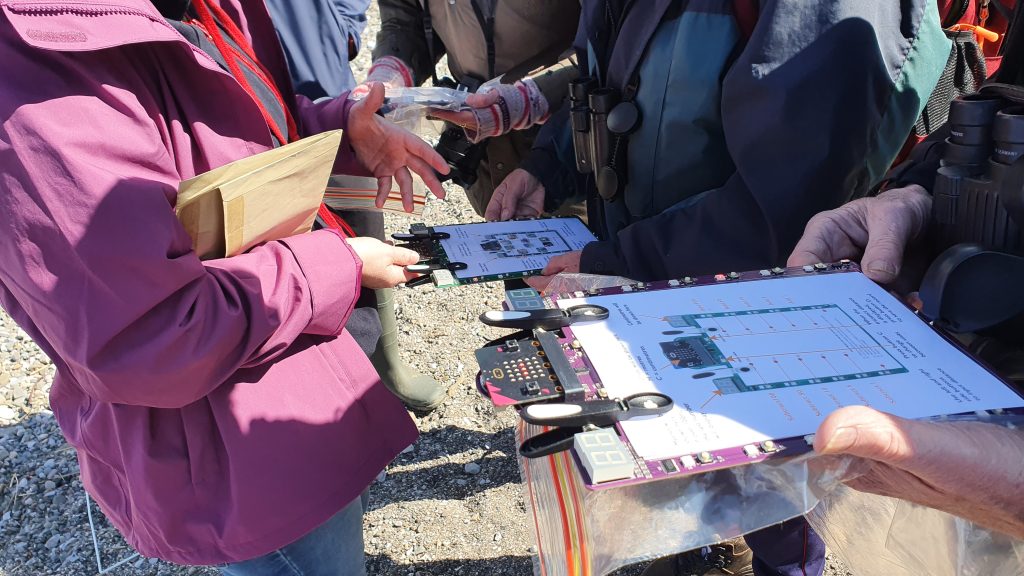
Some of the group measured the width of the beach while others looked at sediment changes along a profile. Some used the clip:bits to record saltmarsh plants, others recorded observations of the strand line. Another person recorded birds. We reflected on the data that would be important to collect for example changes is beach profile and sediment. We also reflected on the clip:bit for salt marsh monitoring to inform new iterations of the design.

